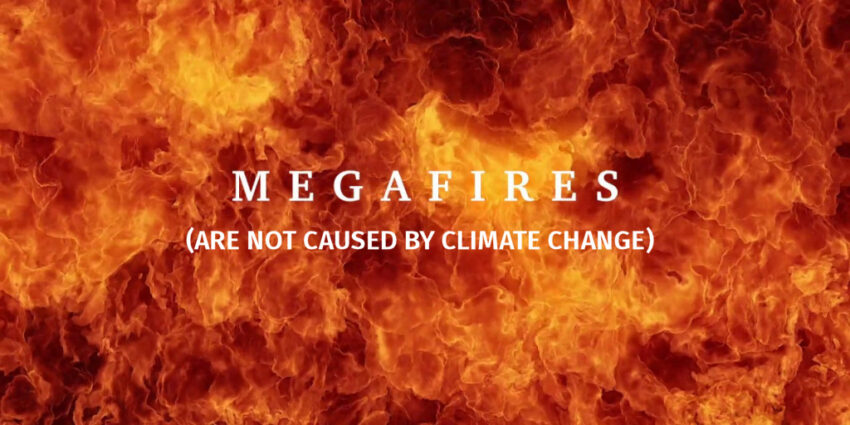From the Cliff Mass weather blog, via WattsUpWithThat.
[Last week], the New York Times ran a story that was blatantly false, with the Seattle Times featuring it as well.
The claim: that Western Washington will experience more “megafires” due to human-caused global warming (climate change).
Unfortunately, the writer of this story (a Washington State stringer for the NY Times) failed to examine the historical record or the best science, getting the essential facts wrong.


How do I know the writer got it wrong?
Because for the past two years, I have researched this very issue and just published a paper on this topic in the peer-reviewed literature (here). I have read every paper and report on this issue.

So exactly that did the NY Times (and the Seattle Times) get wrong?
The article defines megafires as ones that involve hundreds of thousands of acres.
How many such fires have occurred since 1900 in western Washington?
ONE. The Yacolt Fire of 1902 (238,000 acres), just north of the Columbia River.

Has there been an increase in the number or size of large western Washington fires during the past 50 years, a period in which the Earth and our region have warmed?
The answer is no, which alone should make one doubt the NY Times claims.
If global warming contributes to big fires, we should be seeing increases in the number of big western Washington fires due to such climate change. We are not.
The reason for this lack of correlation between warming and big local fires is clear.
Big western Washington fires are very different animals from the small localized westside fires, such as the current Bear Gulch fire on the Olympic Peninsula (about 4000 acres now).
To have a “megaburn” burn in western Washington, one needs strong, sustained easterly (winds from the east. No matter what the temperature, no matter what the prior rainfall, without strong easterly winds we do not get westside megafires.
It is very difficult to produce large wildfires in the very moist environment of western Washington forests. Only strong easterly winds make it possible.
How do I know this?
Because in my research (again published), I looked at EVERY large western Washington and Oregon fire of the past 150 years, examining all available weather observations and simulating most of them with a modern high-resolution model (see sample below of near-surface winds for the 1902 Yacolt fire, colors indicate wind speed).

Every one of them was associated with strong easterly flow.
So what does this have to do with climate change and global warming?
It turns out that strong easterly winds are REDUCED in our area under global warming/climate change.
You read that right. The threat of the necessary strong easterly winds is LESSENED by climate change.
I can tell you why.
Anthropogenic (human-caused) global warming is greater in the interior of continents than over the slower-to-warm oceans. Virtually every climate simulation shows this…it is not controversial (see example below from regional climate runs made by my group)

Warm air is less dense than cold air, which results in preferential pressure declines inland than over the slower-to-warm coastal areas.
If pressure falls more inland (where it warms more), then winds tend to move from west to east (air tends to blow from a high-pressure area to a lower-pressure pressure).
Onshore flow like this is just the OPPOSITE of that needed for big western Washington wildfires.
To put it succinctly: the NY Times and Seattle Times not only got the story wrong, they got it REVERSED. Global warming will reduce the potential for western Washington mega-wildfires because the necessary easterly winds are weakened.
The writer of this story did not bother to examine the frequency of local megafires nor understand the meteorology that drives them.
Such sloppy and poorly researched “journalism” misinforms readers and leads to poor decision-making. Very disappointing.
The post False Stories in the New York Times and the Seattle Times on Western Washington Megafires appeared first on ClimateRealism.
Click this link for the original source of this article.
Author: Guest Contributor
This content is courtesy of, and owned and copyrighted by, https://climaterealism.com and its author. This content is made available by use of the public RSS feed offered by the host site and is used for educational purposes only. If you are the author or represent the host site and would like this content removed now and in the future, please contact USSANews.com using the email address in the Contact page found in the website menu.








